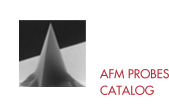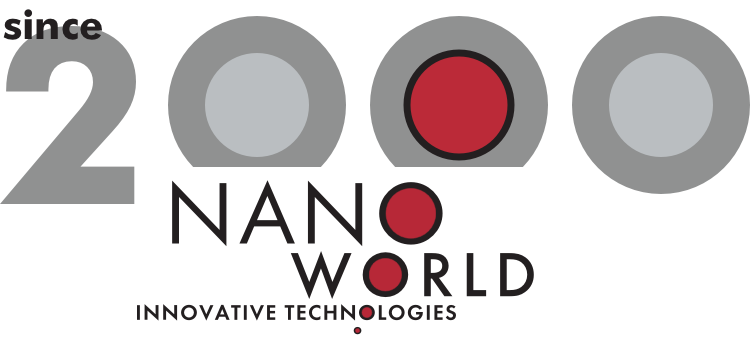Anastasia Shapiro, Noah Joseph, Nadav Mellul, Almogit Abu-Horowitz, Boaz Mizrahi and Ido Bachelet
Folding molecular origami from ribosomal RNA
Journal of Nanobiotechnology, Volume 22, article number 218, (2024)
DOI: https://doi.org/10.1186/s12951-024-02489-2
Heather R. Everson, Kayla Neyra, Dylan V. Scarton, Soumya Chandrasekhar, Christopher M. Green, Thorsten-Lars Schmidt, Igor L. Medintz, Remi Veneziano and Divita Mathur
Purification of DNA Nanoparticles Using Photocleavable Biotin Tethers
ACS Applied Materials & Interfaces 2024, 16, 17, 22334–22343
DOI: https://doi.org/10.1021/acsami.3c18955
Souvik Naskar, Andrea Merino, Javier Espadas, Jayanti Singh, Aurelien Roux, Adai Colom and Harry H. Low
Mechanism for Vipp1 spiral formation, ring biogenesis, and membrane repair
Nature Structural & Molecular Biology (2024)
DOI: https://doi.org/10.1038/s41594-024-01401-8
Ali Asghar Hakami Zanjani, Anna Mularski, Anne Sofie Busk Heitmann, Catarina Dias, Michelle Ege Møller, Kenji Maeda, Jesper Nylandsted, Adam Cohen Simonsen and Himanshu Khandelia
Engineering a membrane-binding protein to trimerize and induce high membrane curvature
Biophysical Journal, Volume 122, Issue 14, p3008-3017July 25, 2023
DOI: https://doi.org/10.1016/j.bpj.2023.04.002
Esra Oktay, Joshua Bush, Merlyn Vargas, Dylan Valerio Scarton, Bailey O’Shea, Amber Hartman, Christopher M. Green, Kayla Neyra, Carolina M. GomesIgor L. Medintz, Divita Mathur and Remi Veneziano
Customized Scaffolds for Direct Assembly of Functionalized DNA Origami
ACS Applied Materials & Interfaces 2023, 15, 23, 27759–27773
DOI: https://doi.org/10.1021/acsami.3c05690
Matthew Chiriboga, Christopher M Green, Divita Mathur, David A Hastman, Joseph S Melinger, Remi Veneziano, Igor L Medintz and Sebastián A Díaz
Structural and optical variation of pseudoisocyanine aggregates nucleated on DNA substrates
Methods Appl. Fluoresc. (2023) 11 014003
DOI: 10.1088/2050-6120/acb2b4
Esra Oktay, Farhang Alem, Keziah Hernandez, Michael Girgis, Christopher Green, Divita Mathur, Igor L. Medintz, Aarthi Narayanan and Remi Veneziano
DNA origami presenting the receptor binding domain of SARS-CoV-2 elicit robust protective immune response
Communications Biology volume 6, Article number: 308 (2023)
DOI: https://doi.org/10.1038/s42003-023-04689-2
Matthew Chiriboga, Christopher M. Green, David A. Hastman, Divita Mathur, Qi Wei, Sebastían A. Díaz, Igor L. Medintz and Remi Veneziano
Rapid DNA origami nanostructure detection and classification using the YOLOv5 deep convolutional neural network
Nature Scientific Reports volume 12, Article number: 3871 (2022)
DOI: https://doi.org/10.1038/s41598-022-07759-3
Anna Mularski, Stine Lauritzen Sønder, Anne Sofie Busk Heitmann, Mayank Prakash Pandey, Himanshu Khandelia, Jesper Nylandsted and Adam Cohen Simonsen
Interplay of membrane crosslinking and curvature induction by annexins
Nature Scientific Reports volume 12, Article number: 22568 (2022)
DOI: https://doi.org/10.1038/s41598-022-26633-w
Katarzyna Wacnik, Vincenzo A. Rao, Xinyue Chen, Lucia Lafage, Manuel Pazos, Simon Booth, Waldemar Vollmer, Jamie K. Hobbs, Richard J. Lewis and Simon J. Foster
Penicillin-Binding Protein 1 (PBP1) of Staphylococcus aureus Has Multiple Essential Functions in Cell Division
American Society for Microbiology Journals, (2022) mBio, Vol. 13, No. 4
DOI: https://doi.org/10.1128/mbio.00669-22
Victor G. Gisbert and Ricardo Garcia
Accurate Wide-Modulus-Range Nanomechanical Mapping of Ultrathin Interfaces with Bimodal Atomic Force Microscopy
ACS Nano 2021, 15, 12, 20574–20581
DOI: https://doi.org/10.1021/acsnano.1c09178
Yang Xin, Guido Grundmeier and Adrian Keller
Adsorption of SARS-CoV-2 Spike Protein S1 at Oxide Surfaces Studied by High-Speed Atomic Force Microscopy
Advanced NanoBiomed Research, Volume 1, Issue 2, February 2021, 2000024
DOI: https://doi.org/10.1002/anbr.202000024
Victor G. Gisbert, Simone Benaglia, Manuel R. Uhlig, Roger Proksch, and Ricardo Garcia
High-Speed Nanomechanical Mapping of the Early Stages of Collagen Growth by Bimodal Force Microscopy
ACS Nano 2021, 15, 1, 1850–1857
DOI: https://doi.org/10.1021/acsnano.0c10159
Alena Khmelinskaia, Henri G. Franquelim, Renukka Yaadav, Eugene P. Petrov and Petra Schwille
Membrane-Mediated Self-Organization of Rod-Like DNA Origami on Supported Lipid Bilayers
Advanced Materials Interfaces, Volume 8, Issue 24, December 22, 2021, 2101094
DOI: https://doi.org/10.1002/admi.202101094
Christopher M. Green, David A. Hastman, Divita Mathur, Kimihiro Susumu, Eunkeu Oh, Igor L. Medintz, and Sebastián A. Díaz
Direct and Efficient Conjugation of Quantum Dots to DNA Nanostructures with Peptide-PNA
ACS Nano 2021, 15, 5, 9101–9110
DOI: https://doi.org/10.1021/acsnano.1c02296
Alexander Zika and Franziska Gröhn
Multiswitchable photoacid–hydroxyflavylium–polyelectrolyte nano-assemblies
Beilstein Journal of Organic Chemistry, 2021, 17, 166–185
DOI: https://doi.org/10.3762/bjoc.17.17
Anne Sofie Busk Heitmann, Ali Asghar Hakami Zanjani, Martin Berg Klenow, Anna Mularski, Stine Lauritzen Sønder, Frederik Wendelboe Lund, Theresa Louise Boye, Catarina Dias, Poul Martin Bendix, Adam Cohen Simonsen, Himanshu Khandelia and Jesper Nylandsted
Phenothiazines alter plasma membrane properties and sensitize cancer cells to injury by inhibiting annexin-mediated repair
Journal of Biological Chemistry (2021), Volume 297, ISSUE 2, 101012
DOI: https://doi.org/10.1016/j.jbc.2021.101012
Peter Reinholdt, Lütje E. Joensen, Daniel Petersen, Maria Szomek, Anna Mularski, Adam Cohen Simonsen, Jacob Kongsted and Daniel Wüstner
Photophysical and Structural Characterization of Intrinsically Fluorescent Sterol Aggregates
Journal of Physical Chemistry B 2021, 125, 22, 5838–5852
DOI: https://doi.org/10.1021/acs.jpcb.1c00628
Yang Xin, Charlotte Kielar, Siqi Zhu, Christoph Sikeler, Xiaodan Xu, Christin Möser, Guido Grundmeier, Tim Liedl, Amelie Heuer-Jungemann, David M. Smith and Adrian Keller
Cryopreservation of DNA Origami Nanostructures
Small (2020), Volume 16, Issue 13, 1905959
DOI: https://doi.org/10.1002/smll.201905959
Rachel Spokoini-Stern, Dimitar Stamov, Hadass Jessel, Lior Aharoni, Heiko Haschke, Jonathan Giron, Ron Unger, Eran Segal, Almogit Abu-Horowitz and Ido Bachelet
Visualizing the structure and motion of the long noncoding RNA HOTAIR
RNA 2020. 26: 629-636
DOI: 10.1261/rna.074633.120
Yang Xin, Salvador Martinez Rivadeneira, Guido Grundmeier, Mario Castro and Adrian Keller
Self-assembly of highly ordered DNA origami lattices at solid-liquid interfaces by controlling cation binding and exchange
NanoResearch 2020, 13(11): 3142–3150
DOI: https://doi.org/10.1007/s12274-020-2985-4
Todd H. Brintlinger, Susan Buckhout-White, Nabil D. Bassim, Divita Mathur, Anirban Samanta, Jeremy T. Robinson, Juan-Carlos Idrobo, Rhonda M. Stroud, Ellen R. Goldman and Mario G. Ancona
Chemical Mapping of Unstained DNA Origami Using STEM/EDS and Graphene Supports
ACS Applied Nano Materials 2020, 3, 2, 1123–1130
DOI: https://doi.org/10.1021/acsanm.9b02574
Alexander Zika, Sarah Bernhardt and Franziska Gröhn
Photoresponsive Photoacid-Macroion Nano-Assemblies
Polymers 2020, 12(8), 1746
DOI: https://doi.org/10.3390/polym12081746
Bohlen, Á. Cuartero-González, E. Pibiri, D. Ruhlandt, A. I. Fernández-Domínguez, P. Tinnefeld and G. P. Acuna
Plasmon-assisted Förster resonance energy transfer at the single-molecule level in the moderate quenching regime
Nanoscale, 2019,11, 7674-7681
DOI: https://doi.org/10.1039/C9NR01204D
Charlotte Kielar, Yang Xin, Xiaodan Xu, Siqi Zhu, Nelli Gorin, Guido Grundmeier, Christin Möser, David M. Smith and Adrian Keller
Effect of Staple Age on DNA Origami Nanostructure Assembly and Stability
Molecules 2019, 24(14), 2577
DOI: https://doi.org/10.3390/molecules24142577
Matthijs Kol, Ben Williams, Henry Toombs-Ruane, Henri G Franquelim, Sergei Korneev, Christian Schroeer, Petra Schwille, Dirk Trauner, Joost CM Holthuis and James A Frank
Optical manipulation of sphingolipid biosynthesis using photoswitchable ceramides
eLife 8:e43230
DOI: https://doi.org/10.7554/eLife.43230.001
Henri G. Franquelim, Alena Khmelinskaia, Jean-Philippe Sobczak, Hendrik Dietz and Petra Schwille
Membrane sculpting by curved DNA origami scaffolds
Nature Communications volume 9, Article number: 811 (2018)
DOI: https://doi.org/10.1038/s41467-018-03198-9
Jihoon Shin, Junghoon Kim, Sung Ha Park and Tai Hwan Ha
Kinetic Trans-Assembly of DNA Nanostructures
ACS Nano 2018, 12, 9, 9423–9432
DOI: https://doi.org/10.1021/acsnano.8b04639
K.P. Sigdel, L.A. Wilt, B.P. Marsh, A.G. Roberts and G.M. King
The conformation and dynamics of P-glycoprotein in a lipid bilayer investigated by atomic force microscopy
Biochemical Pharmacology, Volume 156, October 2018, Pages 302-311
DOI: https://doi.org/10.1016/j.bcp.2018.08.017
Kenta Iijima, Junya Kobayashi and Yukihito Ishizaka
Structural alteration of DNA induced by viral protein R of HIV-1 triggers the DNA damage response
Retrovirology volume 15, Article number: 8 (2018)
DOI: https://doi.org/10.1186/s12977-018-0391-8
Alena Khmelinskaia, Henri G Franquelim, Eugene P Petrov and Petra Schwille
Effect of anchor positioning on binding and diffusion of elongated 3D DNA nanostructures on lipid membranes
Journal of Physics D: Applied Physics (2016) 49 194001
DOI: 10.1088/0022-3727/49/19/194001



















 POINTPROBE®
POINTPROBE®
 ARROW™
ARROW™
 ULTRA-SHORT CANTILEVERS
ULTRA-SHORT CANTILEVERS
 PYREX-NITRIDE
PYREX-NITRIDE
 COATINGS
COATINGS
